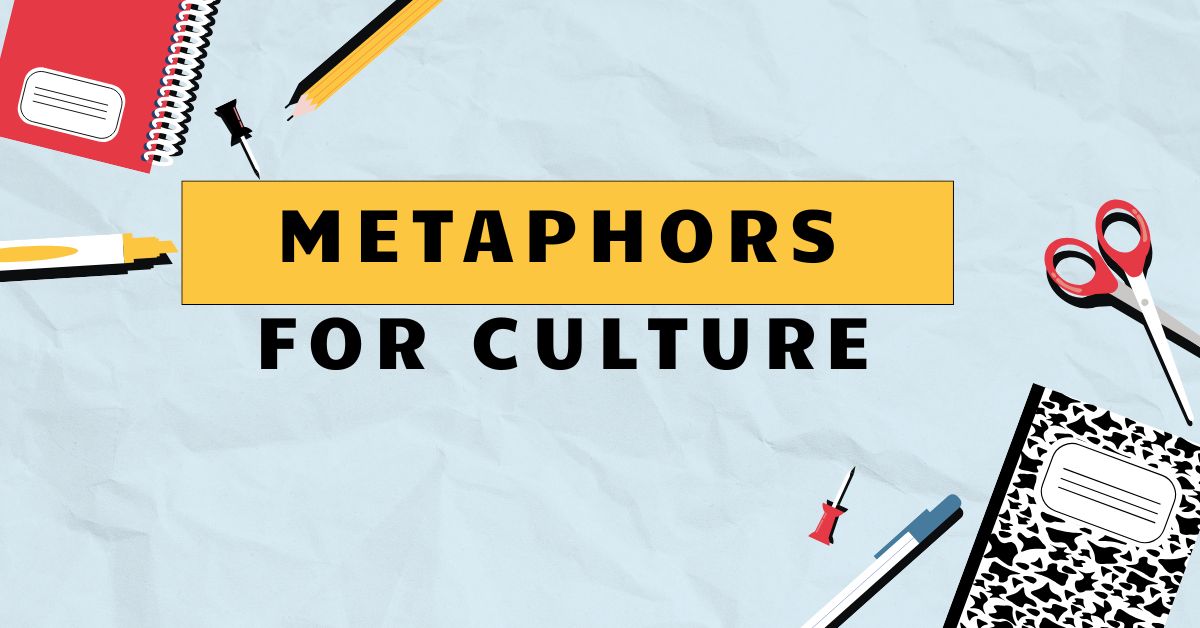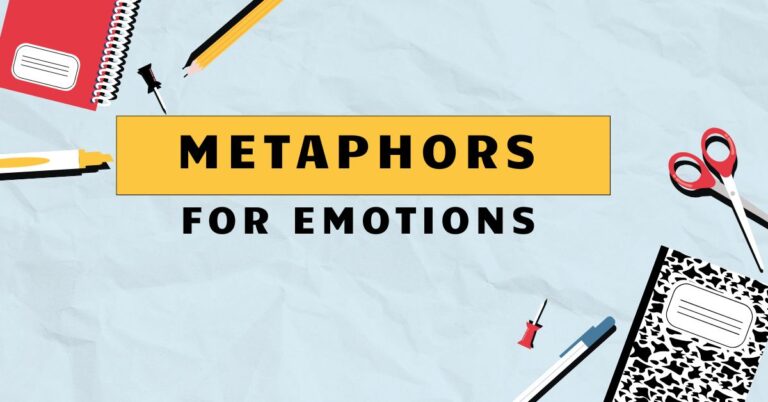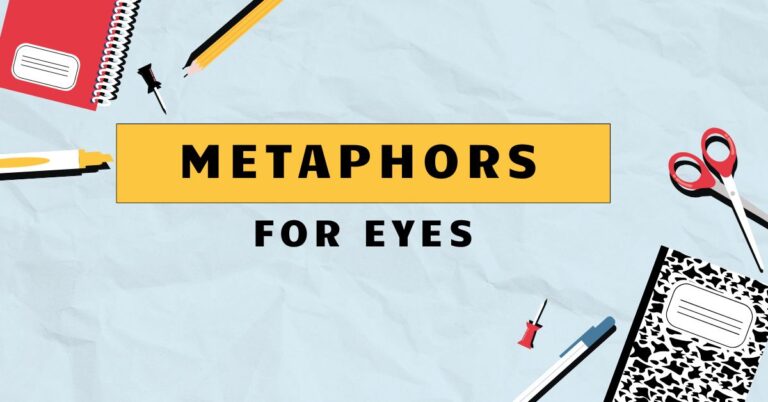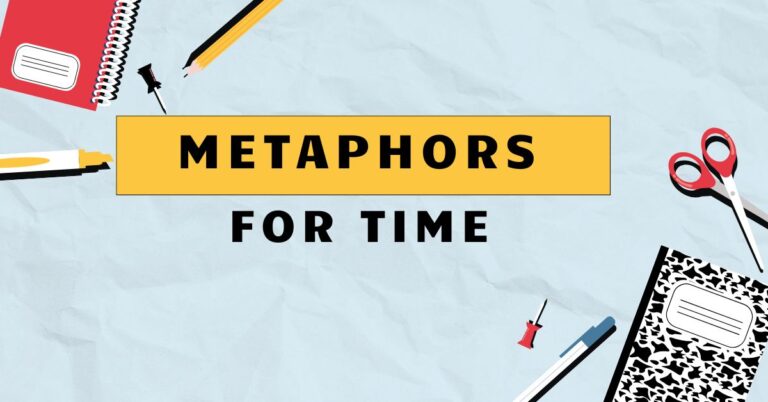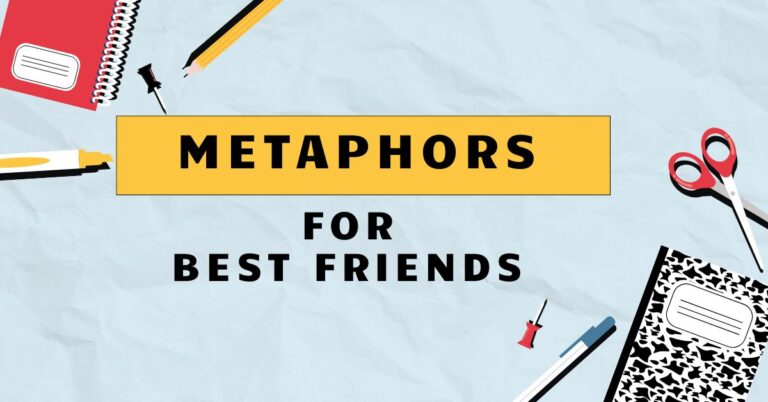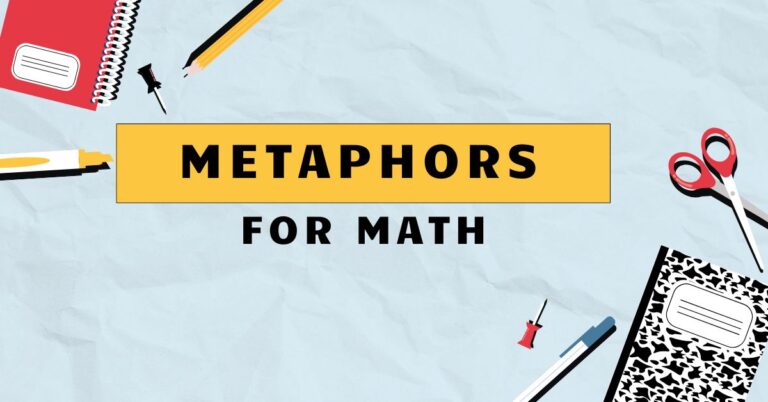29 Metaphors for Culture: Understanding Cultural Concepts
Understanding culture can be challenging due to its abstract nature. Metaphors provide a powerful tool for grasping complex cultural concepts by relating them to more tangible and familiar ideas.
This article explores various metaphors used to describe culture, explaining their meanings, implications, and limitations. This comprehensive guide is designed for students of linguistics, anthropology, sociology, and anyone interested in gaining a deeper understanding of culture and its multifaceted dimensions.
By examining these metaphors, we can gain new perspectives on cultural dynamics and improve intercultural communication.
Table of Contents
- Introduction
- Definition of Culture and Metaphor
- Structural Breakdown of Cultural Metaphors
- Types of Metaphors for Culture
- Examples of Cultural Metaphors
- Usage Rules and Considerations
- Common Mistakes When Using Cultural Metaphors
- Practice Exercises
- Advanced Topics in Cultural Metaphors
- Frequently Asked Questions
- Conclusion
Definition of Culture and Metaphor
Cultureis a complex and multifaceted concept that encompasses the shared beliefs, values, practices, behaviors, and artifacts of a group of people. It shapes how individuals perceive the world, interact with others, and make decisions.
Culture is learned, transmitted across generations, and constantly evolving.
Ametaphoris a figure of speech that directly compares two unrelated things, asserting that one thingisanother. Metaphors are used to explain abstract concepts by relating them to more concrete and understandable ideas.
They are powerful tools for communication, persuasion, and understanding, but can also be limited by their inherent simplifications.
When we use metaphors to describe culture, we are drawing parallels between the abstract concept of culture and more tangible or familiar objects or ideas. This helps to make culture more accessible and understandable, but it’s crucial to recognize that metaphors are not perfect representations and can sometimes oversimplify or distort the complexities of culture.
Structural Breakdown of Cultural Metaphors
Cultural metaphors typically involve two key elements: thetarget domain(culture) and thesource domain(the object or concept used as a metaphor). The structure involves mapping the characteristics of the source domain onto the target domain to create a new understanding of culture.
This mapping process highlights certain aspects of culture while obscuring others.
For example, in the metaphor “culture is an iceberg,” the target domain is culture, and the source domain is an iceberg. The visible part of the iceberg represents the observable aspects of culture (e.g., behaviors, customs), while the much larger, submerged portion represents the hidden aspects (e.g., values, beliefs, assumptions).
The effectiveness of a cultural metaphor depends on how accurately and meaningfully the features of the source domain can be mapped onto the target domain. In this case, the iceberg metaphor effectively illustrates that much of culture is hidden and not immediately apparent.
The structure can also be broken down into the following components:
- Tenor: The subject to which metaphorical attributes are ascribed (culture).
- Vehicle: The object whose attributes are borrowed (iceberg, onion, software, etc.).
- Ground: The shared attributes between the tenor and the vehicle. This is where the meaning of the metaphor lies.
Types of Metaphors for Culture
Several metaphors are commonly used to describe culture, each offering a unique perspective on its nature and dynamics. These metaphors highlight different aspects of culture and can be used in various contexts to facilitate understanding.
Culture as an Iceberg
The “culture as an iceberg” metaphor is one of the most widely used. It suggests that only a small portion of culture is visible (e.g., behaviors, customs, traditions), while a much larger portion remains hidden beneath the surface (e.g., values, beliefs, assumptions, worldviews).
This hidden part significantly influences the visible aspects and is crucial for understanding cultural differences.
This metaphor emphasizes the importance of looking beyond surface-level observations to understand the deeper cultural influences that shape behavior. It highlights the potential for misunderstandings when people from different cultures interact without being aware of these hidden cultural factors.
Culture as an Onion
The “culture as an onion” metaphor suggests that culture consists of multiple layers, each representing different levels of cultural understanding. The outer layers represent the more superficial aspects of culture (e.g., symbols, heroes, rituals), while the inner layers represent the deeper, more profound aspects (e.g., values, beliefs, core assumptions).
Peeling back these layers reveals the complexity and depth of culture.
This metaphor emphasizes the gradual process of cultural understanding, suggesting that it takes time and effort to penetrate the deeper layers of culture. It also highlights the interconnectedness of the different layers, with each layer influencing the others.
Culture as Software
The “culture as software” metaphor suggests that culture is a set of programs or instructions that guide behavior and thinking. Just as software programs determine how a computer operates, culture determines how individuals behave and interact within a society.
This metaphor emphasizes the learned and programmed nature of culture.
This metaphor highlights the idea that cultural patterns are learned and internalized through socialization. It also suggests that cultural behaviors can be modified or reprogrammed through education and experience.
However, it may also imply a deterministic view of culture, suggesting that individuals are simply programmed by their culture.
Culture as a Lens
The “culture as a lens” metaphor suggests that culture shapes how individuals perceive and interpret the world. Just as a lens filters light, culture filters our perceptions, influencing what we see, how we see it, and how we make sense of it.
This metaphor emphasizes the subjective nature of perception and the role of culture in shaping our worldview.
This metaphor highlights the idea that individuals from different cultures may perceive the same events or situations in different ways, leading to misunderstandings and conflicts. It also emphasizes the importance of cultural awareness and empathy in intercultural communication.
Culture as a Melting Pot
The “culture as a melting pot” metaphor suggests that different cultures blend together to create a new, homogenous culture. This metaphor is often used to describe societies where immigrants from various backgrounds assimilate into the dominant culture, creating a new cultural identity.
However, this metaphor has been criticized for downplaying the importance of cultural diversity and the potential for cultural conflict.
This metaphor emphasizes the idea of cultural assimilation and the creation of a shared national identity. However, it may also overlook the challenges faced by immigrants in maintaining their cultural heritage and the potential for cultural inequalities.
Culture as a Tapestry
The “culture as a tapestry” metaphor suggests that culture is a complex and intricate fabric woven from many different threads, each representing a different cultural group or tradition. These threads are interwoven to create a rich and diverse cultural landscape.
This metaphor emphasizes the importance of cultural diversity and the interconnectedness of different cultures.
This metaphor highlights the idea that cultural diversity is a valuable asset and that different cultures can coexist and enrich one another. It also emphasizes the importance of understanding and appreciating cultural differences.
Culture as a River
The “culture as a river” metaphor describes culture as constantly flowing and changing, influenced by various tributaries (external influences) and internal currents (evolving values and beliefs). This metaphor emphasizes the dynamic and fluid nature of culture, highlighting its capacity to adapt and evolve over time.
The metaphor suggests that culture is never static; it is always in motion, influenced by historical events, technological advancements, and interactions with other cultures. It underscores the importance of understanding the historical context and ongoing influences that shape a culture.
This perspective encourages a flexible and adaptive approach to understanding cultural differences.
Culture as a Garden
The “culture as a garden” metaphor portrays culture as something that needs to be carefully cultivated and nurtured. Just as a gardener tends to plants, a society needs to manage and care for its cultural values, traditions, and practices.
This metaphor emphasizes the role of individuals and institutions in preserving and promoting culture.
This metaphor highlights the idea that culture is not something that happens automatically; it requires conscious effort and attention. It also suggests that different aspects of culture may need different types of care and attention.
Some traditions may need to be preserved, while others may need to be adapted to changing circumstances. This perspective emphasizes the responsibility of each generation to safeguard and enrich its cultural heritage.
Examples of Cultural Metaphors
The following tables provide specific examples of how these metaphors can be applied to understand different cultural phenomena.
Examples of Culture as an Iceberg
This table illustrates how the iceberg metaphor can be used to analyze visible and hidden aspects of different cultures.
| Culture | Visible Aspects (Above the Surface) | Hidden Aspects (Below the Surface) |
|---|---|---|
| American | Individualism, Direct Communication, Fast-Paced Lifestyle | Emphasis on Personal Achievement, Belief in Equality, Time-Oriented |
| Japanese | Politeness, Formal Greetings, Group Harmony | Collectivism, Respect for Elders, Emphasis on Saving Face |
| German | Punctuality, Efficiency, Directness | Orderliness, Rule-Following, Emphasis on Structure |
| Indian | Family-Oriented, Respect for Elders, Religious Rituals | Hierarchy, Interdependence, Spirituality |
| Brazilian | Festivals, Music (Samba), Dance | Importance of Relationships, Flexibility, “Jeitinho” (Finding creative solutions) |
| Chinese | Tea Ceremonies, Calligraphy, Martial Arts | Confucianism, Filial Piety, Harmony |
| Italian | Emphasis on Family, Passionate Expression, Culinary Traditions | Strong Family Ties, Importance of Social Connections, Appreciation for Beauty |
| Mexican | Day of the Dead Celebrations, Mariachi Music, Colorful Art | Strong Family Values, Respect for Ancestors, Importance of Community |
| Nigerian | Elaborate Weddings, Traditional Attire, Storytelling | Communal Living, Respect for Elders, Oral Tradition |
| Canadian | Politeness, Multiculturalism, Hockey | Tolerance, Peacefulness, Social Welfare |
| Australian | Informality, Outdoor Lifestyle, “Fair Go” Attitude | Egalitarianism, Mateship, Independence |
| Egyptian | Hospitality, Family Gatherings, Religious Observances | Honor, Loyalty, Tradition |
| Kenyan | Harambee (Community Self-Help), Storytelling, Tribal Traditions | Communalism, Respect for Elders, Oral History |
| Korean | Respect for Hierarchy, Group Harmony, K-Pop | Collectivism, Conformity, Education |
| Swedish | Equality, Fika (Coffee Break), Minimalism | Individualism within Collectivism, Social Welfare, Environmental Awareness |
| Swiss | Precision, Punctuality, Neutrality | Orderliness, Independence, Direct Democracy |
| Turkish | Hospitality, Family Values, Turkish Coffee | Honor, Tradition, Community |
| Vietnamese | Respect for Elders, Family Reunions, Water Puppet Shows | Confucianism, Ancestor Worship, Collectivism |
| Thai | Respect for Monarchy, Wai (Greeting), Thai Massage | Buddhism, Harmony, Non-Confrontation |
| Argentinian | Tango, Mate (Tea), Passionate Debates | Family Loyalty, Importance of Social Connections, Nationalism |
Examples of Culture as an Onion
This table illustrates how the onion metaphor can be used to analyze the layers of cultural understanding.
| Culture | Outer Layers (Symbols, Heroes, Rituals) | Inner Layers (Values, Beliefs, Core Assumptions) |
|---|---|---|
| American | American Flag, Founding Fathers, Thanksgiving | Individual Freedom, Democracy, Capitalism |
| Japanese | Cherry Blossoms, Samurai, Tea Ceremony | Harmony, Respect, Group Identity |
| German | National Flag, Beethoven, Oktoberfest | Efficiency, Order, Precision |
| Indian | National Flag, Gandhi, Diwali | Spirituality, Family, Tradition |
| Brazilian | Carnival, Pelé, Samba | Social Connection, Flexibility, Joy |
| Chinese | Dragon, Confucius, Lunar New Year | Harmony, Respect for Elders, Ancestor Worship |
| Italian | Colosseum, Leonardo da Vinci, Christmas Eve Dinner | Family, Beauty, Tradition |
| Mexican | Pyramids, Frida Kahlo, Day of the Dead | Family, Community, Respect for Ancestors |
| Nigerian | Traditional Attire, Chinua Achebe, Tribal Festivals | Community, Respect for Elders, Oral Tradition |
| Canadian | Maple Leaf, Terry Fox, Canada Day | Tolerance, Peace, Multiculturalism |
| Australian | Kangaroo, Steve Irwin, Australia Day | Equality, Mateship, Independence |
| Egyptian | Pyramids, Cleopatra, Ramadan | Honor, Tradition, Hospitality |
| Kenyan | Maasai Warriors, Wangari Maathai, Independence Day | Community, Respect for Elders, Oral History |
| Korean | Taekwondo, King Sejong, Chuseok | Collectivism, Education, Conformity |
| Swedish | Midsummer, Ingmar Bergman, Walpurgis Night | Equality, Social Welfare, Environmental Awareness |
| Swiss | Swiss Alps, Albert Einstein, Swiss National Day | Orderliness, Independence, Direct Democracy |
| Turkish | Turkish Flag, Mustafa Kemal Atatürk, Ramadan Feast | Honor, Tradition, Community |
| Vietnamese | Ao Dai, Ho Chi Minh, Tet Holiday | Collectivism, Ancestor Worship, Respect for Elders |
| Thai | Elephants, King Bhumibol Adulyadej, Songkran | Buddhism, Harmony, Non-Confrontation |
| Argentinian | Tango, Jorge Luis Borges, Independence Day | Family Loyalty, Importance of Social Connections, Nationalism |
Examples of Culture as Software
This table illustrates how the software metaphor can be used to understand cultural programming.
| Culture | “Programming” (Socialization Processes) | “Output” (Behavioral Patterns) |
|---|---|---|
| American | Individualistic Education, Competitive Work Environment | Self-Reliance, Achievement-Oriented, Assertiveness |
| Japanese | Group-Oriented Education, Emphasis on Conformity | Harmony-Seeking, Deference to Authority, Politeness |
| German | Structured Education, Emphasis on Rules and Regulations | Orderliness, Efficiency, Rule-Following |
| Indian | Family-Centered Upbringing, Emphasis on Tradition | Respect for Elders, Interdependence, Spirituality |
| Brazilian | Emphasis on Social Interaction, Flexible Schedules | Relationship-Oriented, Adaptable, Spontaneous |
| Chinese | Confucian Education, Emphasis on Filial Piety | Respect for Elders, Harmony, Group Conformity |
| Italian | Strong Family Ties, Emphasis on Social Connections | Family-Oriented, Sociable, Expressive |
| Mexican | Emphasis on Family Values, Community Involvement | Family-Oriented, Communal, Respectful |
| Nigerian | Communal Upbringing, Emphasis on Oral Tradition | Communal, Respectful, Storytelling |
| Canadian | Multicultural Education, Emphasis on Tolerance | Tolerant, Peaceful, Inclusive |
| Australian | Informal Education, Emphasis on Independence | Independent, Egalitarian, Informal |
| Egyptian | Emphasis on Tradition, Religious Education | Traditional, Respectful, Hospitable |
| Kenyan | Communal Upbringing, Emphasis on Oral History | Communal, Respectful, Storytelling |
| Korean | Emphasis on Education, Group Conformity | Collectivist, Respectful, Hardworking |
| Swedish | Emphasis on Equality, Social Welfare | Egalitarian, Socially Conscious, Environmentally Aware |
| Swiss | Emphasis on Orderliness, Direct Democracy | Orderly, Independent, Rule-Following |
| Turkish | Emphasis on Tradition, Family Values | Traditional, Family-Oriented, Hospitable |
| Vietnamese | Confucian Education, Emphasis on Ancestor Worship | Collectivist, Respectful, Ancestor-Venerating |
| Thai | Buddhist Teachings, Emphasis on Harmony | Peaceful, Harmonious, Respectful |
| Argentinian | Emphasis on Family Loyalty, Social Connections | Family-Oriented, Sociable, Nationalistic |
Usage Rules and Considerations
When using cultural metaphors, it’s important to do so thoughtfully and with awareness of their limitations. Here are some rules and considerations:
- Be aware of oversimplification: Metaphors are inherently simplifications and can obscure the complexities and nuances of culture.
- Choose appropriate metaphors: Select metaphors that accurately reflect the aspects of culture you want to highlight. Some metaphors are more suitable for certain contexts than others.
- Consider cultural context: Be mindful of the cultural background of your audience. A metaphor that resonates in one culture may not be meaningful or appropriate in another.
- Avoid stereotypes: Ensure that your use of metaphors does not perpetuate harmful stereotypes or generalizations about cultures.
- Use multiple metaphors: Using multiple metaphors can provide a more comprehensive and nuanced understanding of culture.
- Acknowledge limitations: Be transparent about the limitations of your chosen metaphors and acknowledge that they are not perfect representations of culture.
Common Mistakes When Using Cultural Metaphors
Several common mistakes can occur when using cultural metaphors, leading to misunderstandings or misrepresentations of culture.
| Mistake | Correct Example | Incorrect Example |
|---|---|---|
| Oversimplifying Culture | “Culture can be seen as an iceberg, with visible practices and hidden values, but it is essential to recognize the unique nuances within each culture.” | “Culture is just an iceberg; what you see is all there is.” |
| Applying Metaphors Universally | “The melting pot metaphor may describe the assimilation process in some societies, but it doesn’t fully capture the experiences of all immigrant groups.” | “All cultures are melting pots where everyone eventually becomes the same.” |
| Perpetuating Stereotypes | “Using the software metaphor can help explain how behaviors are learned, but we must avoid implying that people are simply programmed and lack individual agency.” | “People from [Culture X] are programmed to be [Stereotypical Trait].” |
| Ignoring Cultural Context | “The garden metaphor can illustrate the need to nurture cultural traditions, but the specific practices that need care will vary greatly between cultures.” | “All cultures need to be pruned and cultivated in the same way.” |
| Using Only One Metaphor | “To understand culture fully, we can use multiple metaphors, such as an iceberg to show hidden values and a tapestry to represent diversity.” | “Culture is simply an iceberg.” |
Practice Exercises
Test your understanding of cultural metaphors with these practice exercises.
Exercise 1: Identifying Metaphors
Identify the cultural metaphor being used in each of the following statements.
| Question | Answer |
|---|---|
| 1. “Our nation is a vibrant tapestry of diverse cultures, each thread contributing to its beauty.” | Tapestry |
| 2. “Much of their cultural values are hidden beneath the surface, influencing their behavior in subtle ways.” | Iceberg |
| 3. “The community is like a garden; we must nurture its traditions and values to ensure it thrives.” | Garden |
| 4. “Society is like software; we learn its rules and codes from a young age.” | Software |
| 5. “The city is a melting pot where different cultures blend together to create something new.” | Melting Pot |
| 6. “Culture is a lens through which we view the world, shaping our perceptions and interpretations.” | Lens |
| 7. “Culture is like a river, constantly flowing and changing with the times.” | River |
| 8. “To understand their culture, you need to peel back the layers and uncover the core values and beliefs.” | Onion |
| 9. “The nation’s identity is a rich tapestry woven from the threads of countless immigrant experiences.” | Tapestry |
| 10. “Their cultural norms are deeply ingrained, like a program running in the background of their minds.” | Software |
Exercise 2: Applying Metaphors
Choose a cultural metaphor and explain how it can be used to understand a specific cultural phenomenon (e.g., communication styles, family structures, social customs).
| Question | Answer |
|---|---|
| 1. Explain how the “iceberg” metaphor can be used to understand communication styles in Japanese culture. | The iceberg metaphor highlights that much of Japanese communication is indirect and implicit. The visible part includes politeness and formal greetings, while the hidden part involves values like harmony and saving face. Understanding these hidden values is crucial for effective communication. |
| 2. Explain how the “onion” metaphor can be used to understand the layers of cultural understanding in German culture. | The onion metaphor can be used to illustrate that understanding German culture requires peeling back layers. The outer layers might include punctuality and efficiency, while the inner layers reveal deeper values such as orderliness and structure. Gaining a comprehensive understanding requires penetrating these inner layers. |
| 3. Explain how the “software” metaphor can be used to understand the role of education in shaping cultural values in Korean culture. | The software metaphor suggests that education in Korea acts as a programming process, instilling values such as collectivism and respect for elders. This “programming” shapes behavioral patterns and societal norms. |
| 4. Explain how the “melting pot” metaphor can be used to describe the cultural dynamics of the United States. | The melting pot metaphor suggests that the United States is a place where diverse cultures blend together to create a new, homogenous culture. However, this metaphor also overlooks the challenges faced by immigrant groups in maintaining their cultural heritage. |
| 5. Explain how the “tapestry” metaphor can be used to describe the cultural landscape of Canada. | The tapestry metaphor highlights the diverse and interconnected nature of Canadian culture, where different cultural groups coexist and contribute to a rich cultural landscape. This metaphor emphasizes the importance of cultural diversity and understanding. |
| 6. Explain how the “river” metaphor can be used to understand the evolution of cultural traditions in Indian culture. | The river metaphor illustrates how Indian cultural traditions are constantly evolving, influenced by historical events, technological advancements, and interactions with other cultures. The traditions are never static, always adapting and changing. |
| 7. Explain how the “garden” metaphor can be used to understand the role of leadership in preserving cultural heritage in Egyptian culture. | The garden metaphor suggests that leaders in Egyptian culture need to carefully cultivate and nurture cultural traditions and values, ensuring they are preserved and passed down to future generations. |
| 8. Explain how the “lens” metaphor can be used to understand different perspectives on social justice issues in Australian culture. | The “lens” metaphor highlights how culture shapes our perceptions and interpretations of social justice issues. Individuals from different cultural backgrounds may view the same issues through different lenses, leading to varying perspectives and approaches. |
| 9. Explain how the “iceberg” metaphor can be used to understand non-verbal communication in Thai culture. | The iceberg metaphor helps illustrate that a significant portion of Thai non-verbal communication is hidden beneath the surface. While visible aspects include the “wai” greeting and gentle demeanor, deeper values such as “kreng jai” (avoiding causing discomfort to others) influence subtle cues. |
| 10. Explain how the “onion” metaphor can be used to understand the values and beliefs of Argentinian culture. | The “onion” metaphor allows us to peel back layers of Argentinian culture, starting with outward symbols like tango and mate. As we delve deeper, we uncover the core values of family loyalty, importance of social connections, and strong sense of nationalism. |
Advanced Topics in Cultural Metaphors
For advanced learners, consider exploring the following topics:
- Critical analysis of cultural metaphors: Examine the limitations and potential biases of different metaphors and their impact on cultural understanding.
- Cross-cultural comparison of metaphors: Investigate how different cultures use metaphors to understand themselves and others.
- The role of metaphors in intercultural communication: Explore how metaphors can facilitate or hinder communication between people from different cultures.
- The use of metaphors in cultural research: Analyze how researchers use metaphors to frame their studies and interpret their findings.
- Developing new cultural metaphors: Create innovative metaphors that capture the complexities and nuances of culture in new and insightful ways.
Frequently Asked Questions
- What is the purpose of using metaphors to describe culture?
Metaphors help to simplify and explain complex cultural concepts by relating them to more tangible and familiar ideas. They provide a framework for understanding cultural differences and promoting intercultural awareness.
- What are the limitations of using cultural metaphors?
Metaphors are inherently simplifications and can oversimplify or distort the complexities of culture. They can also perpetuate stereotypes and biases if used carelessly. It’s crucial to be aware of these limitations and use metaphors thoughtfully.
- How can I choose the right metaphor for describing culture?
The choice of metaphor depends on the specific aspects of culture you want to highlight and the context in which you are using it. Consider the cultural background of your audience and choose a metaphor that resonates with them. Using multiple metaphors can provide a more comprehensive understanding.
- Can cultural metaphors be harmful?
Yes, if they are used to perpetuate stereotypes, oversimplify complex cultural phenomena, or misrepresent cultural values. It is crucial to use metaphors with sensitivity and awareness of their potential impact.
- How do different cultures use metaphors differently?
Different cultures may use different metaphors to understand themselves and others. The meaning and relevance of a particular metaphor can vary depending on cultural context. Understanding these differences is essential for effective intercultural communication.
- Are there any metaphors that should be avoided when describing culture?
Metaphors that promote stereotypes, reinforce prejudices, or oversimplify complex cultural realities should be avoided. It’s important to choose metaphors that are respectful, accurate, and nuanced.
- How can I use cultural metaphors to improve my intercultural communication skills?
By understanding the metaphors that people from different cultures use to understand the world, you can gain insights into their values, beliefs, and perspectives. This can help you to communicate more effectively and build stronger relationships.
- What is the difference between the “melting pot” and “tapestry” metaphors for culture?
The “melting pot” metaphor suggests that different cultures blend together to create a homogenous culture, while the “tapestry” metaphor suggests that different cultures coexist and contribute to a rich and diverse cultural landscape. The “melting pot” implies assimilation, while the “tapestry” emphasizes diversity and interconnectedness.
- How does the “culture as software” metaphor help us understand cultural norms?
The “culture as software” metaphor suggests that cultural norms are like programs or instructions that guide behavior and thinking. Just as software programs determine how a computer operates, culture determines how individuals behave and interact within a society.
- What aspects of culture does the “culture as a garden” metaphor highlight?
The “culture as a garden” metaphor highlights the idea that culture needs to be carefully cultivated and nurtured. Just as a gardener tends to plants, a society needs to manage and care for its cultural values, traditions, and practices.
Conclusion
Understanding culture is a complex endeavor, and metaphors offer valuable tools for navigating its intricacies. By exploring metaphors like “culture as an iceberg,” “culture as an onion,” and “culture as software,” we gain diverse perspectives on cultural dynamics.
However, it is crucial to use these metaphors thoughtfully, acknowledging their limitations and potential for oversimplification.
The key takeaway is that cultural metaphors are aids to understanding, not definitive representations. They should be used to foster empathy, promote intercultural communication, and encourage deeper exploration of cultural complexities.
By critically analyzing and creatively applying these metaphors, we can enhance our ability to appreciate and navigate the rich tapestry of human cultures.

